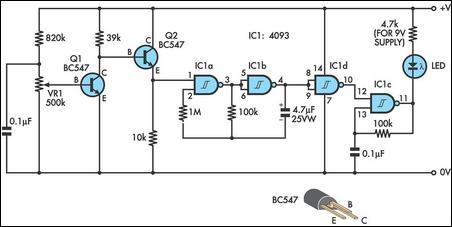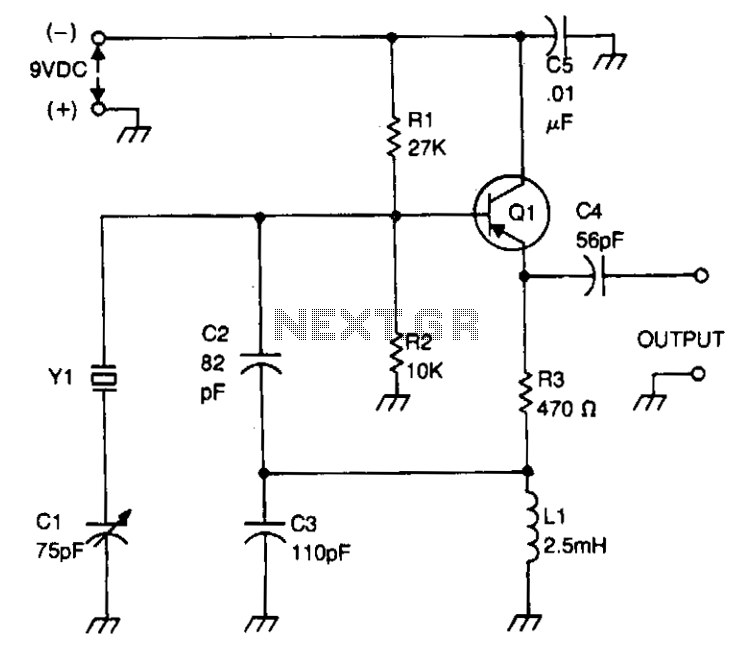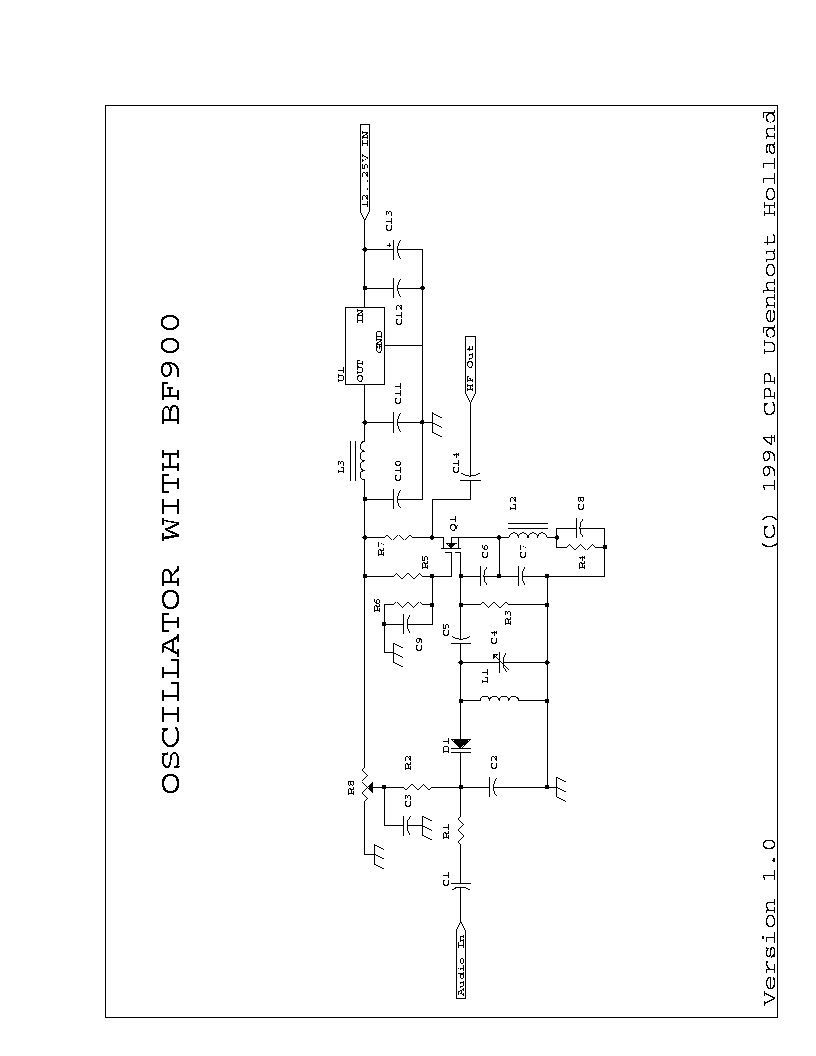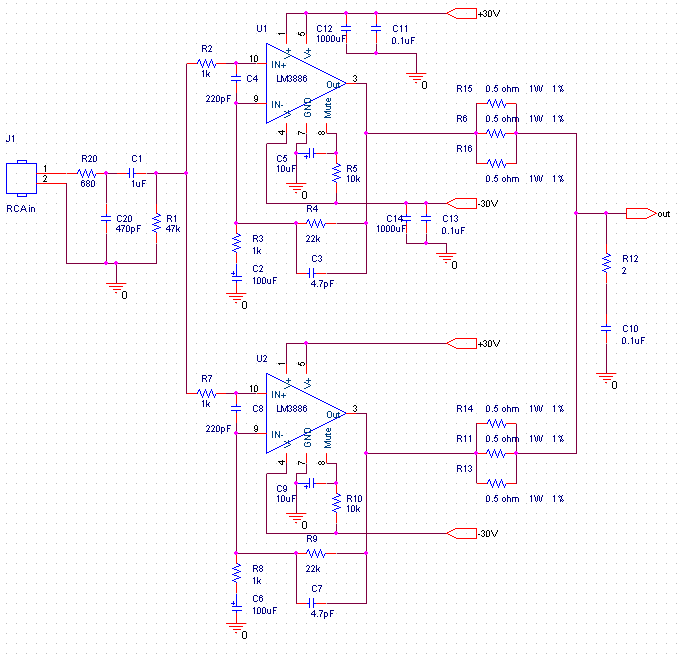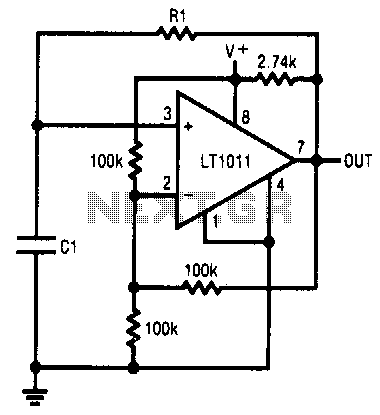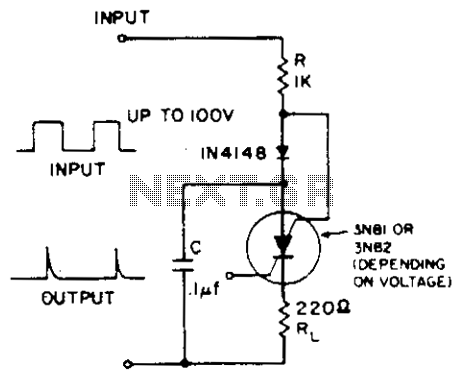
Very Low Power 32kHz Oscillator
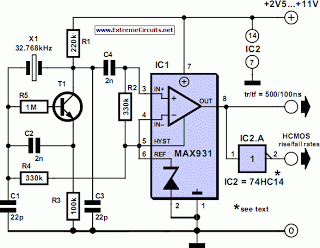
The 32-kHz low-power clock oscillator provides several advantages compared to traditional oscillator circuits that utilize a CMOS inverter. These inverter circuits often exhibit issues such as significant fluctuations in supply currents across a 3V to 6V supply range, making it challenging to achieve current consumption below 250 µA. Additionally, their operation can be inconsistent due to wide variations in supply voltage, and the input characteristics of the inverter can vary significantly among different manufacturers. The circuit presented here addresses these challenges. It consumes only 13 µA from a 3V supply and consists of a one-transistor amplifier/oscillator (T1) and a low-power comparator/reference device (IC1). The base of T1 is biased at 1.25 V using resistors R5 and R4, along with the reference from IC1. T1 can be any small-signal transistor with a beta of around 100 at 5 µA (set by R3, which maintains the collector voltage at approximately 1 V below Vcc). The amplifier's nominal gain is about 2 V/V. The quartz crystal, along with load capacitors C1 and C3, creates a feedback loop around T1, generating oscillation due to the 180-degree phase shift. The bias voltage of 1.25 V for the comparator within the MAX931 is established by the reference through R2, ensuring that the comparator's input swing is accurately centered around this reference voltage. Operating at 3 V and 32 kHz, IC1 consumes just 7 µA. The comparator output can source up to 40 mA and sink 5 mA, which is sufficient for most low-power applications. However, the moderate rise and fall times of 500 ns and 100 ns, respectively, may lead to increased switching currents in standard high-speed CMOS logic. The optional 74HC14 Schmitt trigger depicted at the circuit output can accommodate the comparator's rise and fall times with minimal additional supply current.
The circuit operates effectively as a low-power clock oscillator, making it suitable for battery-operated devices where energy efficiency is critical. The use of a single transistor in the oscillator configuration simplifies the design while maintaining reliable performance. The choice of a quartz crystal ensures precise frequency stability, which is essential for timing applications. The feedback mechanism involving the load capacitors is crucial for sustaining oscillations and achieving the desired frequency of operation.
The MAX931 comparator is a key component in this design, providing a stable reference voltage that enhances the reliability of the oscillator. Its low power consumption further contributes to the overall efficiency of the circuit. The output capabilities of the comparator allow it to drive various loads, making it versatile for different applications.
In scenarios where high-speed switching is necessary, the inclusion of the 74HC14 Schmitt trigger can mitigate the effects of slower rise and fall times from the comparator output. This addition ensures that the logic levels are clean and can interface effectively with high-speed digital circuits without introducing excessive power consumption.
Overall, this 32-kHz low-power clock oscillator circuit is a robust solution for applications requiring low current draw and reliable timing, making it an excellent choice for modern electronic designs.The 32-kHz low-power clock oscillator offers numerous advantages over conventional oscillator circuits based on a CMOS inverter. Such inverter circuits present problems, for example, supply currents fluctuate widely over a 3V to 6V supply range, while current consumption below 250 µA is difficult to attain.
Also, operation can be unreliable with wide variations in the supply voltage and the inverter`s input characteristics are subject to wide tolerances and differences among manufacturers. The circuit shown here solves the above problems. Drawing just 13 µA from a 3V supply, it consists of a one-transistor amplifier/oscillator (T1) and a low-power comparator/reference device (IC1).
The base of T1 is biased at 1. 25 V using R5/R4 and the reference in IC1. T1 may be any small-signal transistor with a decent beta of 100 or so at 5 µA (defined here by R3, fixing the collector voltage at about 1 V below Vcc). The amplifier`s nominal gain is approximately 2 V/V. The quartz crystal combined with load capacitors C1 and C3 forms a feedback path around T1, whose 180 degrees of phase shift causes the oscillation.
The bias voltage of 1. 25 V for the comparator inside the MAX931 is defined by the reference via R2. The comparator`s input swing is thus accurately centred around the reference voltage. Operating at 3 V and 32 kHz, IC1 draws just 7 µA. The comparator output can source and sink 40 mA and 5 mA respectively, which is ample for most low-power loads. However, the moderate rise/fall times of 500 ns and 100 ns respectively can cause standard, high-speed CMOS logic to draw higher than usual switching currents.
The optional 74HC14 Schmitt trigger shown at the circuit output can handle the comparator`s rise/fall times with only a small penalty in supply current. 🔗 External reference
The circuit operates effectively as a low-power clock oscillator, making it suitable for battery-operated devices where energy efficiency is critical. The use of a single transistor in the oscillator configuration simplifies the design while maintaining reliable performance. The choice of a quartz crystal ensures precise frequency stability, which is essential for timing applications. The feedback mechanism involving the load capacitors is crucial for sustaining oscillations and achieving the desired frequency of operation.
The MAX931 comparator is a key component in this design, providing a stable reference voltage that enhances the reliability of the oscillator. Its low power consumption further contributes to the overall efficiency of the circuit. The output capabilities of the comparator allow it to drive various loads, making it versatile for different applications.
In scenarios where high-speed switching is necessary, the inclusion of the 74HC14 Schmitt trigger can mitigate the effects of slower rise and fall times from the comparator output. This addition ensures that the logic levels are clean and can interface effectively with high-speed digital circuits without introducing excessive power consumption.
Overall, this 32-kHz low-power clock oscillator circuit is a robust solution for applications requiring low current draw and reliable timing, making it an excellent choice for modern electronic designs.The 32-kHz low-power clock oscillator offers numerous advantages over conventional oscillator circuits based on a CMOS inverter. Such inverter circuits present problems, for example, supply currents fluctuate widely over a 3V to 6V supply range, while current consumption below 250 µA is difficult to attain.
Also, operation can be unreliable with wide variations in the supply voltage and the inverter`s input characteristics are subject to wide tolerances and differences among manufacturers. The circuit shown here solves the above problems. Drawing just 13 µA from a 3V supply, it consists of a one-transistor amplifier/oscillator (T1) and a low-power comparator/reference device (IC1).
The base of T1 is biased at 1. 25 V using R5/R4 and the reference in IC1. T1 may be any small-signal transistor with a decent beta of 100 or so at 5 µA (defined here by R3, fixing the collector voltage at about 1 V below Vcc). The amplifier`s nominal gain is approximately 2 V/V. The quartz crystal combined with load capacitors C1 and C3 forms a feedback path around T1, whose 180 degrees of phase shift causes the oscillation.
The bias voltage of 1. 25 V for the comparator inside the MAX931 is defined by the reference via R2. The comparator`s input swing is thus accurately centred around the reference voltage. Operating at 3 V and 32 kHz, IC1 draws just 7 µA. The comparator output can source and sink 40 mA and 5 mA respectively, which is ample for most low-power loads. However, the moderate rise/fall times of 500 ns and 100 ns respectively can cause standard, high-speed CMOS logic to draw higher than usual switching currents.
The optional 74HC14 Schmitt trigger shown at the circuit output can handle the comparator`s rise/fall times with only a small penalty in supply current. 🔗 External reference
